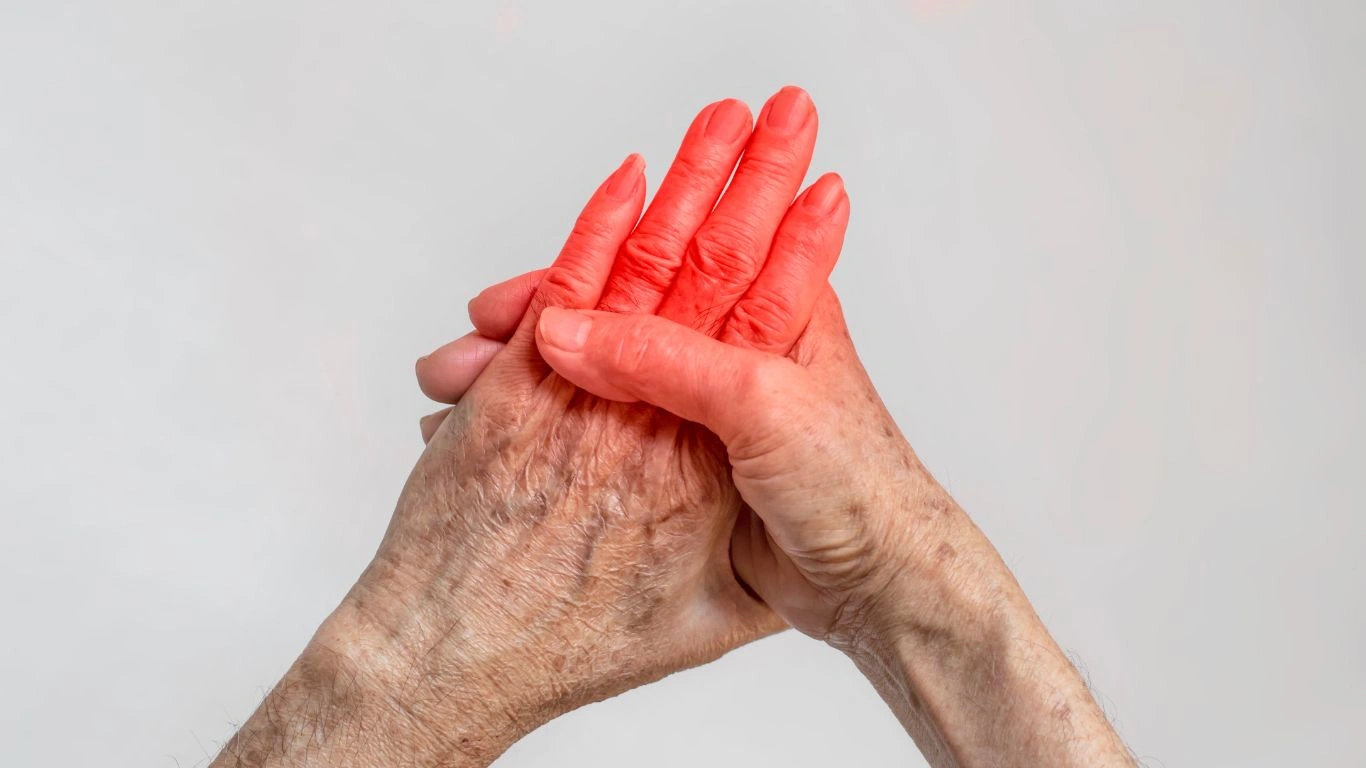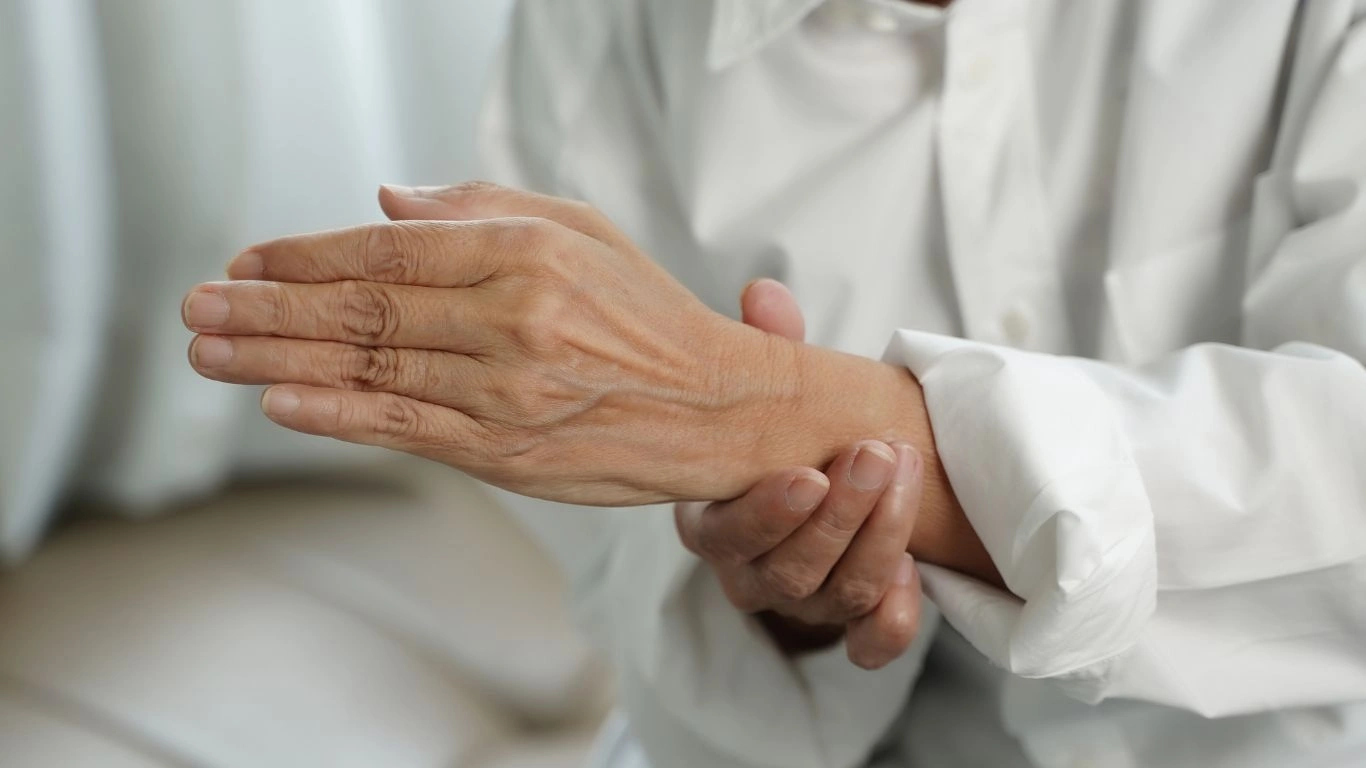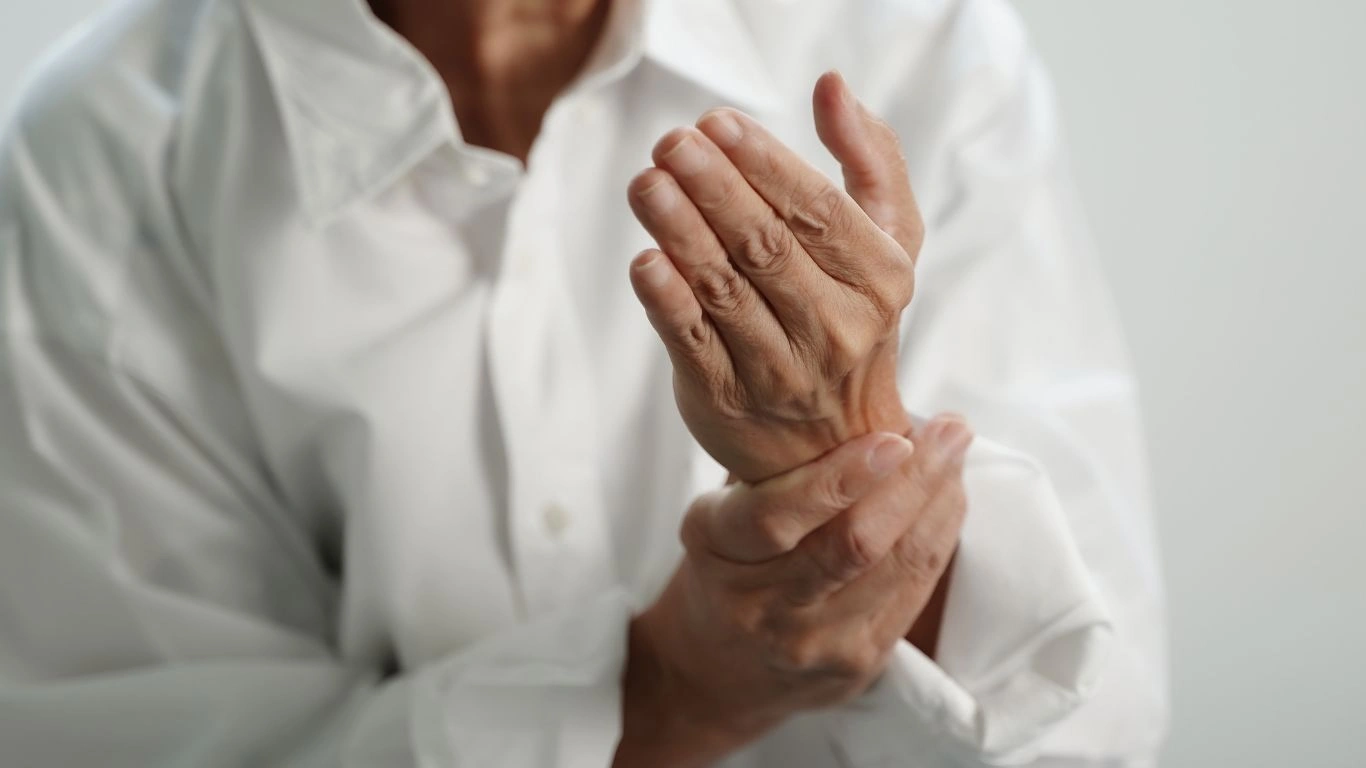How to Manage Rheumatoid Arthritis Flare-Ups and Reduce Inflammation
Living with rheumatoid arthritis (RA) and dealing with autoimmune disease flare-ups can be an overwhelming experience, both physically and emotionally. As a Rheumatology Nurse Practitioner, I’ve seen firsthand how difficult it is to navigate these flare-ups. These periods of increased disease activity can significantly affect a person’s quality of life, making everyday tasks feel impossible. But it doesn’t have to be this way. In this article, I want to share some of the key insights I’ve gained from my experience in treating patients with RA, particularly when it comes to flare-ups, and offer some tips for managing them effectively. If you or someone you love is living with rheumatoid arthritis, understanding how flare-ups work and how to cope with them is essential.
What Are Rheumatoid Arthritis Flares?

Rheumatoid arthritis (RA) is a chronic autoimmune disease that causes inflammation in the joints. It occurs when the immune system mistakenly attacks the body’s healthy tissues, resulting in joint pain, stiffness, and swelling. This can sometimes lead to periods of symptom exacerbation, known as flare-ups.
When people talk about flare-ups in the context of rheumatoid arthritis, they are referring to times when the disease becomes more active, and the symptoms intensify. These flares can last for a few days or even weeks, depending on the individual and how well their condition is being managed. Flare-ups can happen unexpectedly, often triggering a rollercoaster of physical discomfort and emotional distress.
What makes flare-ups particularly challenging is that they can be unpredictable. Sometimes, a person with RA may go for weeks or months with minimal symptoms, only to have a sudden flare disrupt their routine. The causes of flare-ups are complex, and each patient’s experience is unique. In my practice, I’ve seen flare-ups occur due to a variety of factors, including stress, changes in weather, infections, or even not taking medications as prescribed. Understanding these triggers and managing them effectively can make all the difference in reducing the severity of flare-ups and improving quality of life.
Common Symptoms of Rheumatoid Arthritis Flares

During a flare-up, RA symptoms tend to intensify. If you’ve been living with rheumatoid arthritis for a while, you probably already know what to expect when a flare hits. The most common symptoms include:
- Joint pain and tenderness: This is often the most noticeable symptom. The pain may be sharp or dull, and it can be localized to a specific joint or spread across multiple areas.
- Swelling and inflammation: Flare-ups usually bring about visible swelling in the affected joints, often accompanied by redness and warmth.
- Stiffness: Many people with RA report feeling stiff, especially in the mornings or after long periods of inactivity.
- Fatigue: RA flares can leave you feeling exhausted, even after a full night’s sleep. This is due to the body’s immune system working overtime.
- Fever: In some cases, flare-ups may cause a mild fever, a sign that the body is dealing with increased inflammation.
These symptoms can vary in intensity and may differ from one person to another. Sometimes, patients experience a sudden increase in joint pain or a gradual build-up of discomfort over time. Regardless of how the flare-up presents itself, the impact on daily life can be profound.
What Triggers Rheumatoid Arthritis Flares?

Understanding what triggers rheumatoid arthritis flare-ups is a crucial part of managing the disease. While each individual’s triggers may vary, there are some common factors that I’ve seen consistently in my patients:
1. Stress
Stress is a huge trigger for autoimmune disease flare-ups, including RA. Emotional and physical stress can exacerbate inflammation in the body, leading to more intense symptoms. In fact, one of the most common things I hear from my patients is that their flare-ups seem to occur during particularly stressful times in their lives. It’s essential to find ways to manage stress, whether it’s through relaxation techniques, mindfulness, exercise, or talking to a counselor.
2. Weather Changes
It might sound a little surprising, but changes in weather—especially cold or damp conditions—can also trigger flare-ups. Many of my patients have reported increased joint pain and stiffness when the weather turns cold or rainy. While we can’t control the weather, keeping warm and staying active during the colder months can help reduce the impact of this trigger.
3. Infections
Infections are another major trigger for RA flare-ups. When the body is fighting an infection, the immune system becomes more active, and this can lead to inflammation in the joints. Even something as simple as a cold or the flu can set off a flare. If you’re feeling under the weather, it’s especially important to reach out to your healthcare provider to make sure your symptoms are managed appropriately.
Managing Rheumatoid Arthritis Flare-Ups
While flare-ups are a natural part of living with rheumatoid arthritis, there are ways to manage them and reduce their severity. As someone who works closely with RA patients, I always encourage a comprehensive approach that involves both medical treatment and lifestyle adjustments. Some of the most effective strategies for managing flare-ups include:
- Medication adjustments: Sometimes, flare-ups require changes in your medication regimen. Your healthcare provider may adjust your disease-modifying anti-rheumatic drugs (DMARDs) or prescribe short-term corticosteroids to manage inflammation.
- Rest and recovery: During a flare-up, it’s important to give your body the rest it needs to recover. While staying active is important in managing RA overall, you may need to take it easy when you’re experiencing a flare.
- Physical therapy: In some cases, physical therapy can help reduce pain and improve mobility during flare-ups. A physical therapist can teach you exercises that strengthen the muscles around your joints, providing better support.
- Nutrition and diet: A healthy diet rich in anti-inflammatory foods can help reduce the frequency and intensity of flare-ups. Omega-3 fatty acids, found in foods like fish and flaxseeds, can be particularly beneficial for managing inflammation.
Everyone’s experience with rheumatoid arthritis is different, so it’s important to work closely with your healthcare provider to find a management plan that works for you. The right combination of treatments and lifestyle adjustments can help you weather the storms of RA flare-ups with less pain and more control over your life.
How to Recognize When a Rheumatoid Arthritis Flare is Coming

Being able to recognize the early signs of a rheumatoid arthritis (RA) flare-up is incredibly important. Over the years, I’ve worked with many patients who have shared that they feel like they can sense when a flare is coming before it fully hits. It’s almost like an intuitive feeling. Whether it’s a slight increase in joint pain or just a change in how their body feels, they know something is off. In my own experience as a Rheumatology Nurse Practitioner, I can tell you that paying attention to these subtle signs can make a significant difference in how well you manage the flare-up when it arrives.
Here are a few of the early indicators that could signal a flare is on the way:
- Increased joint stiffness: One of the first signs many patients mention is feeling more stiffness in their joints. This is often noticed in the morning or after a period of rest. The stiffness may be more intense than usual, making it harder to move or get out of bed.
- Fatigue: Fatigue is another early warning sign. If you’re suddenly feeling more tired than usual, even without doing much physical activity, it’s worth paying attention to. RA fatigue can feel like it comes out of nowhere and can sometimes be accompanied by a general sense of malaise.
- Worsening pain: If you’re noticing that your usual pain levels are starting to feel sharper or more intense, that could be an indication of a flare. For some people, pain can be localized to a few joints, while others may feel it more broadly across their body.
- Changes in sleep patterns: As the body experiences more inflammation, your sleep patterns may start to change. This could mean waking up frequently during the night or having trouble falling asleep due to discomfort.
- Swelling or redness in the joints: A flare often brings noticeable swelling, especially around the joints affected by RA. If you start to see more visible swelling, or if a joint feels unusually warm to the touch, that’s a red flag that inflammation is increasing.
If you’re able to recognize these signs early on, it gives you a better chance of intervening before the flare-up becomes too severe. Managing it at this stage can reduce the intensity and duration of the symptoms, giving you more control over your body.
How to Manage a Rheumatoid Arthritis Flare-Up at Home

When a rheumatoid arthritis flare-up hits, there are several things you can do at home to help ease the symptoms and make yourself more comfortable. As someone who works with RA patients every day, I’ve seen how lifestyle changes and self-care strategies can play a crucial role in minimizing flare-up discomfort.
Here are some practical tips for managing your flare-ups at home:
1. Rest and Protect Your Joints
When your joints are flaring up, it’s essential to give them time to rest. Overexerting yourself can make the inflammation worse. But this doesn’t mean you should be completely immobile. Gentle movement, such as light stretching or walking, can help keep your joints flexible without overburdening them.
It’s also a good idea to use supportive devices like braces, splints, or assistive tools to protect the joints during flare-ups. These can help reduce the pressure on your affected areas and provide additional stability when you’re moving around.
2. Apply Heat or Cold
Depending on what feels best for you, heat or cold therapy can provide relief during a flare. For many people, cold compresses are great for reducing swelling and numbing the pain. You can use an ice pack wrapped in a towel or even a bag of frozen peas to target the most painful areas. Just make sure not to apply ice directly to the skin to avoid injury.
If your joints are feeling particularly stiff, heat therapy can be soothing. You might want to use a warm towel or heating pad to ease the tension in the muscles and joints. A warm bath can also be an excellent option for full-body relief.
3. Stay Hydrated
Hydration is key when dealing with inflammation. It may sound simple, but drinking plenty of water can help flush toxins from your system and support your joints. Many people don’t realize how important hydration is in managing RA, especially during a flare-up. When the body is under stress, staying hydrated helps support your overall health and reduces the severity of symptoms.
4. Modify Your Diet to Combat Inflammation
Your diet can also play a significant role in how well your body responds to a flare. While there’s no magic food that will completely eliminate RA flare-ups, certain foods can help reduce inflammation in the body. In my experience, I’ve seen great benefits from a diet rich in:
- Omega-3 fatty acids: Foods like salmon, flaxseeds, and walnuts can help lower inflammation.
- Antioxidant-rich foods: Colorful vegetables, such as spinach, bell peppers, and berries, can provide antioxidants that support immune function.
- Whole grains and fiber: Brown rice, quinoa, and whole wheat products can help keep your digestive system healthy and may reduce inflammation.
- Anti-inflammatory herbs and spices: Turmeric, ginger, and garlic are natural anti-inflammatories and can be easily incorporated into your meals.
On the flip side, it’s a good idea to avoid processed foods, sugary snacks, and excessive alcohol, as these can increase inflammation and worsen symptoms. A balanced, nutrient-rich diet is your best ally when managing flare-ups.
The Importance of Regular Monitoring and Communication with Your Healthcare Provider
One of the most important aspects of managing rheumatoid arthritis flare-ups is maintaining open communication with your healthcare provider. In my practice, I always emphasize the importance of tracking your symptoms and working with your doctor to adjust your treatment plan as needed. Here’s why it matters:
1. Adjusting Medications
If a flare-up is persistent or particularly severe, your healthcare provider may need to adjust your medications. Disease-modifying anti-rheumatic drugs (DMARDs), biologics, or corticosteroids might need to be increased or temporarily changed to better control the flare. Regular check-ins ensure that your treatment plan is still the best fit for you.
2. Preventing Long-Term Damage
When RA is left unmanaged, repeated flare-ups can lead to long-term joint damage and deformities. By staying on top of your flare-ups and keeping your healthcare provider informed, you’re helping prevent more severe complications down the road.
3. Managing Emotional Health
Dealing with chronic illness can take a toll on your mental health. Many of my patients experience stress, anxiety, or depression during flare-ups. If this is something you’re dealing with, it’s important to talk to your provider about emotional support options. Whether it’s therapy, support groups, or stress-relieving activities, taking care of your emotional well-being is just as important as managing your physical health.
Preventing Rheumatoid Arthritis Flare-Ups: Long-Term Strategies

As someone who works directly with individuals affected by rheumatoid arthritis (RA), I can tell you that preventing flare-ups is a key goal for many of my patients. The truth is, flare-ups can’t always be completely avoided, but there are long-term strategies that can significantly reduce their frequency and severity. It’s not just about managing a flare when it occurs; it’s about setting up your body for success to make those flare-ups less likely to happen in the first place. So, let’s talk about some of these strategies that can make a big difference over time.
1. Consistent Medication Management
The cornerstone of managing rheumatoid arthritis and preventing flare-ups is maintaining a consistent medication regimen. For patients with RA, medications like disease-modifying anti-rheumatic drugs (DMARDs), biologics, and nonsteroidal anti-inflammatory drugs (NSAIDs) are crucial in reducing inflammation and slowing the disease’s progression. These medications can help prevent flare-ups from becoming frequent or severe.
As a nurse practitioner, I encourage my patients to never skip doses, even if they’re feeling well. A flare-up can sneak up when you least expect it, and stopping medications prematurely can make things worse down the road. It’s also important to have open conversations with your healthcare provider about adjusting your treatment plan if you feel like it’s not working as effectively as it should be.
Additionally, regular check-ups and monitoring are essential. Your doctor may need to tweak your medications based on your symptoms or how well you’re responding. Staying on top of this process is critical for long-term flare prevention.
2. Regular Exercise and Physical Activity
Another key strategy for preventing flare-ups is staying physically active. Exercise may sound counterintuitive when you’re in pain or dealing with stiffness, but maintaining movement is essential for keeping your joints healthy and reducing inflammation. Regular physical activity helps maintain flexibility, strengthens the muscles around your joints, and can even reduce stress levels – all of which play a role in preventing flare-ups.
As a nurse, I often recommend low-impact exercises, such as swimming, walking, or cycling, which are gentle on the joints. Stretching and yoga can also improve range of motion and relieve tension. But of course, always listen to your body – if you’re experiencing a flare-up, take it easy and consult your healthcare provider before starting a new exercise regimen.
Consistency is key here. Even if you start slow and work your way up, regular movement over time can make a huge difference in managing your RA and minimizing flare-ups.
3. Managing Stress for Better Control
Stress is one of the biggest contributors to RA flare-ups, as I’ve seen time and time again in my patients. When you’re stressed, your body releases certain hormones that can trigger inflammation, exacerbating symptoms of rheumatoid arthritis. That’s why learning how to manage stress effectively is so important in reducing flare-up frequency.
Some of the most effective stress management techniques include deep breathing exercises, mindfulness meditation, progressive muscle relaxation, and even simple activities like listening to music or going for a walk. For some people, having a hobby or something enjoyable to focus on can be a great stress reliever.
In addition to mental relaxation, make sure to take breaks throughout the day to avoid physical burnout. Stress doesn’t just affect your mental health; it also impacts your physical well-being, especially when dealing with a chronic condition like RA. Setting boundaries, asking for help when needed, and taking time for self-care can have a significant impact on how you manage stress and, in turn, reduce the chance of flare-ups.
Nutrition and Diet: Fueling Your Body to Fight RA

Food is fuel, and what you eat can have a profound effect on how your body responds to rheumatoid arthritis. In my practice, I emphasize the importance of a balanced, anti-inflammatory diet to my patients. Certain foods are known to have natural anti-inflammatory properties that can help control inflammation in the body, potentially reducing flare-ups.
A few key dietary tips include:
- Omega-3 fatty acids: These are found in fatty fish like salmon, mackerel, and sardines, as well as in plant sources like flaxseeds and chia seeds. Omega-3s are potent anti-inflammatory agents that can help reduce joint pain and stiffness.
- Fruits and vegetables: A diet rich in colorful fruits and vegetables, such as berries, leafy greens, and bell peppers, provides antioxidants that fight oxidative stress and inflammation. Antioxidants are essential for protecting your body from the damage caused by free radicals, which are linked to increased inflammation.
- Whole grains: Brown rice, oats, and quinoa are whole grains that provide fiber, which can help reduce inflammation and support overall digestive health.
- Spices: Turmeric and ginger are two well-known anti-inflammatory spices. I recommend adding these to your meals regularly – they can be easily incorporated into cooking, smoothies, or even teas.
While focusing on these anti-inflammatory foods, it’s also important to limit your intake of foods that can increase inflammation. Processed foods, sugary snacks, fried foods, and refined carbohydrates can all contribute to increased inflammation in the body, making flare-ups more likely. A healthy, whole foods-based diet can do wonders for your RA management over time.
Living with RA: Maintaining a Positive Outlook
Living with rheumatoid arthritis is undoubtedly challenging. But the key to coping and thriving with this condition is not just about managing symptoms – it’s about maintaining a positive mindset and focusing on what you can control. Yes, there will be tough days, but it’s important to celebrate the victories, no matter how small they may seem. Whether it’s being able to walk a bit further or feeling less pain on a given day, those moments of relief are worth cherishing.
Additionally, it’s essential to connect with others who understand your journey. Support groups, whether in person or online, can be a great way to share experiences, learn from others, and feel less isolated. If you’re dealing with a flare-up, don’t hesitate to reach out to your loved ones for help – you don’t have to go through it alone.
Stay Informed and Empowered
One of the most empowering things you can do as a person with rheumatoid arthritis is to stay informed. The more you understand about your condition, the better equipped you’ll be to manage it. And that’s where resources like this article, healthcare professionals, and patient support organizations come in. Educating yourself about the latest treatments, management strategies, and research can help you make the best decisions for your health.
If you ever feel like you’re not getting the support you need from your current treatment plan or healthcare provider, don’t be afraid to seek a second opinion. Everyone’s journey with RA is unique, and it’s crucial to find what works best for you.
For additional resources and information, feel free to check out trusted health sources such as Health.Google or CDC.gov.
Disclaimer
This article is for informational purposes only and does not constitute medical advice. Always consult with your healthcare provider before making any changes to your treatment plan or lifestyle. The information provided here reflects my personal experience as a Rheumatology Nurse Practitioner and should not replace professional medical guidance.

Tarra Nugroho is a dedicated Nurse Practitioner with a strong foundation in family and preventive care. She brings both compassion and clinical expertise to her practice, focusing on patient-centered care and health education. As a contributor to Healthusias.com, Tarra translates medical knowledge into clear, empowering articles on topics like women’s health, chronic disease management, and lifestyle medicine. Her mission is simple: help people feel seen, heard, and informed—both in the clinic and through the content she creates. When she’s not caring for patients, Tarra enjoys weekend hikes, plant-based cooking, and curling up with a good health podcast.






